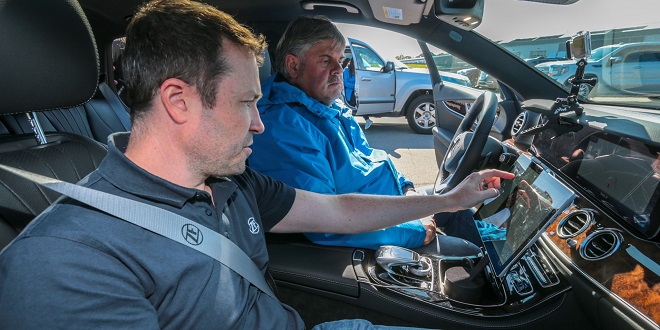Side Impact Protection Systems (SIPS)

For additional protection in the event that a vehicle is hit from the side, side-impact protection systems (SIPS) are now mandatory on American cars, utility vehicles, passenger vans, and pickup trucks. SIPS features a variety of structural design elements as well as the side airbags and curtains described in the previous section.
SIPS can include crash-resistant door pillars with top portions that are more rigid than the lower portions in order to transfer the force of the impact away from the head as the lower part of the pillar moves inward. Other SIPS components can include safety cages incorporated into the body structure of the vehicle and crumple zones that absorb some of the impact by crumpling in a way that doesn’t endanger the occupants.
Steel beams reinforce the doors and sides of the vehicle to prevent them from crushing those seated inside. Some vehicles have side-impact tubes that transfer the thrust of the crash to a steel box located in the center of the vehicle; the box collapses to absorb the impact. Others have increased padding in doors and other areas.
Adjustable Devices
Although the ability to adjust side-and rear-view mirrors and seatback angles has been standard for many, many years, an increasing number of other devices now can be tailored to fit each driver, and sometimes passengers, as well. The more comfortable a driver is — and the better he or she can reach and operate the steering wheel, pedals, and gearshift — the more efficient and less distracted and fatigued that driver will be, especially on long or difficult trips
Adjustable steering wheels
According to Road & Track, “researchers suggest that 40 percent of women driving larger vehicles do not sit at a safe distance from the steering wheel.” Now, steering wheels whose tilt can be adjusted and that can telescope toward or away from the driver are increasingly standard. Some steering wheels can even be swung to the side without affecting the settings to allow the driver to enter and exit the vehicle more easily.
Adjustable pedals
A switch or keypad that simultaneously adjusts the height of both the accelerator and the brake pedals, as well as their distance from the driver, is now available. If you’re below or above average height, this feature is worth serious consideration.
Adjustable head restraints
In 2007, according to the IIHS (the only agency that tests seats and head restraints dynamically to see how well they prevent whiplash injuries), about 200,000 whiplash injuries out of around 2 million claims filed annually caused serious long-term medical problems. They stress that the design of the seat and the head restraint must work together for effective protection.
Vehicles should have head restraints that automatically adjust when the angle of the seat back is changed. But to avoid whiplash injuries, people who are not of average stature may need to adjust their head restraints manually to the safest position, and this definitely includes rear-seat passengers! In this case, the tallest people are at the greatest risk, although short people are also affected.
Last word
Many vehicles don’t have adjustable rear seat head restraints, and some have no head restraint for the center rear seat. If you’re looking for a new vehicle, check to see whether passengers in the rear of the vehicle will be able to travel safely.





